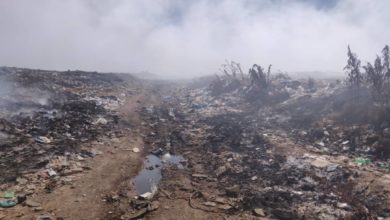Parental migration a major factor in adolescent pregnancy spike, report finds

The National Assessment on Adolescent Pregnancies in Zimbabwe 2023 report revealed that the surge in parental migration is a key driver of adolescent pregnancy.
The study, conducted by the Centre for Sexual Health and HIV/AIDS Research (CeSHHAR) with support from UNICEF, UNESCO, and UNFPA, aimed to understand the root causes of adolescent pregnancy, particularly in the wake of COVID-19.
Due to economic hardships, many parents and guardians migrate to other countries in search of better opportunities, often leaving their children behind.
According to the report, between 2019 and 2022, an estimated 1,706,946 antenatal care bookings were made by women of childbearing age (10 years and above) at 1,560 healthcare facilities.
“Of these, 21% were among adolescents aged 10-19 years,” the report states. “A total of 1,532 maternal deaths were recorded, and 25% of these were among adolescent and young women under 24 years.”
The report identifies the prevailing economic recession, leading to poverty, unemployment, and declining agricultural income, as another key driver of adolescent pregnancy.
It further highlights that the upsurge in parental migration undermines family structures, leaving children alone or under the care of temporary caregivers, thereby increasing their vulnerability to risky sexual behaviour and sexual abuse.
“Lack of parental care and supervision due to parents/caregivers’ long working hours and prolonged absence from home has fueled adolescent pregnancies through consensual sex, transactional sex, and sexual abuse,” the report states.
The report also finds that the economic decline forces children to supplement the family income, leading them into activities such as artisanal gold panning, vending, or domestic work, which increases their vulnerability to early engagement in risky sexual behaviour, drug and substance abuse, and dropping out of school.
Early exposure to pornography and sexually explicit material through increased and unrestricted access to cellphones is identified as an emerging key driver of adolescent pregnancy.
Drug and substance abuse is reported to affect adolescents and young people regardless of age, gender, and location. Parties like “Vuzu” or school leavers’ parties are identified as high-risk events where adolescents may be initiated into drug use.
“Drugs and substance use were cited as making adolescents high and thereby limiting their capacity to negotiate for safer sex or access and utilise SRHR services,” the report states.
Other key drivers identified include the prohibition of corporal punishment in schools, limited parent-child communication on sexual and reproductive health and rights (SRHR), limited youth recreational facilities, the COVID-19 pandemic, and social and religious norms.
The report reveals that approximately 31% (134) of adolescents reported having had forced sex on their first sexual encounter. Of those who reported to the police, 74% reported that no action was taken by authorities, 24% reported pending or withdrawn court cases, and 2% reported perpetrators being prosecuted.






